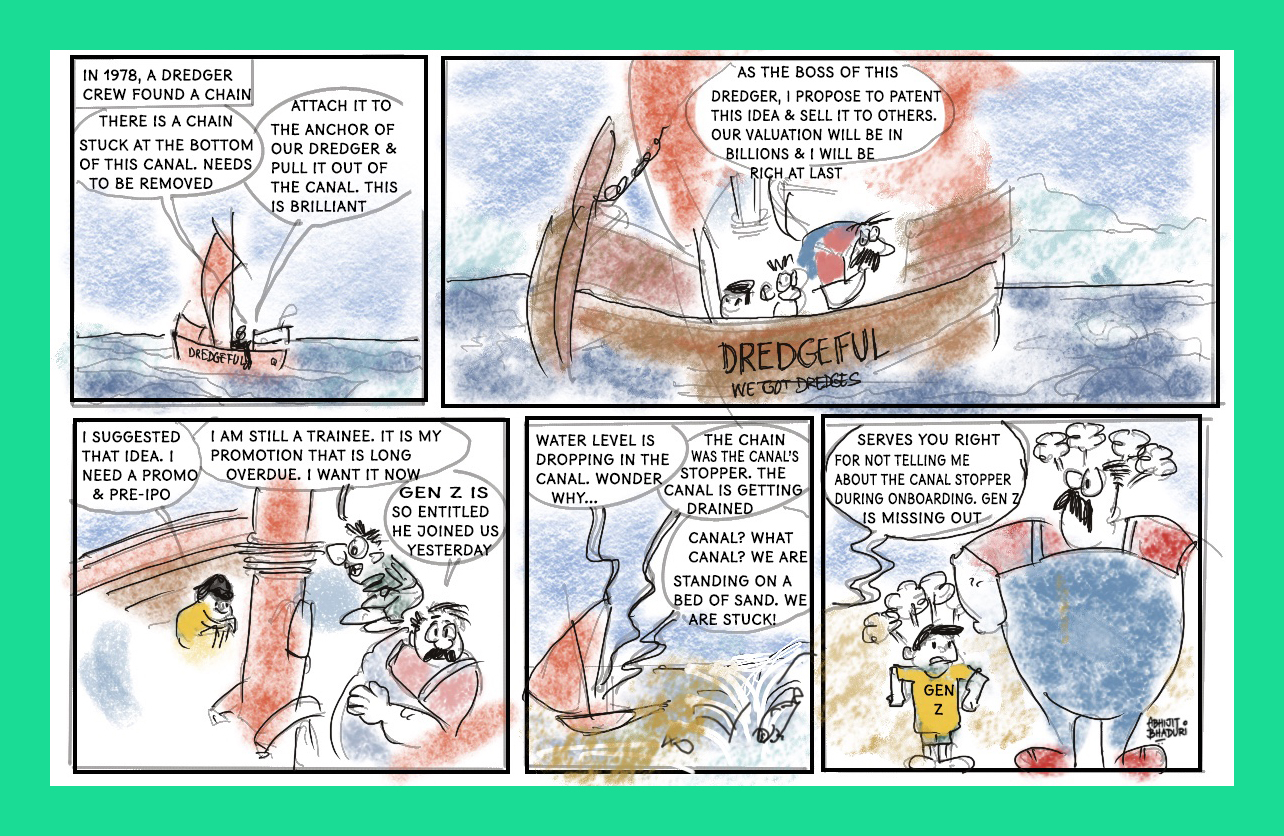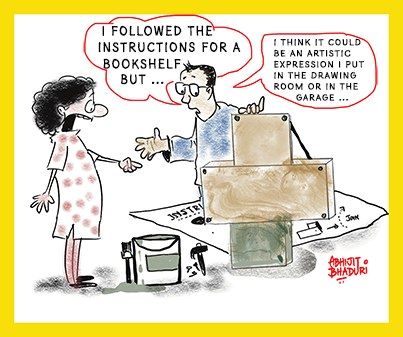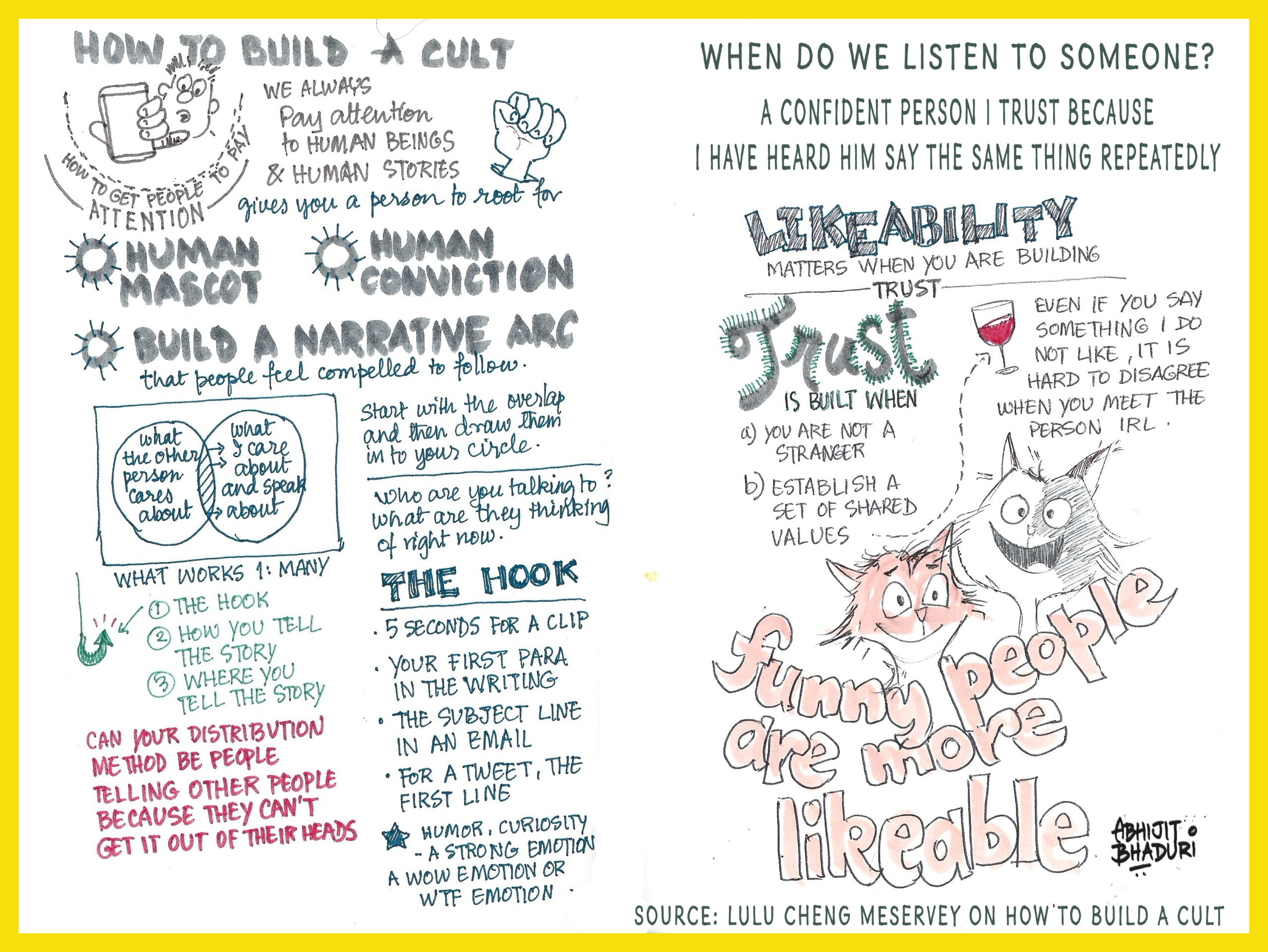
Tim Harford wrote about this in the FT Magazine of 19th April 2025. In 1978, the crew of a dredger found a chain at the bottom of a canal while carrying out some repair work. Someone suggested that they should attach the chain to the anchor of the dredger and pull it off. That chain was actually attached the STOPPER of the canal. The crew watched the canal disappear in front of their eyes.
Organizational Dementia Is Real
People leave jobs. There are layoffs. There are mergers and acquisitions and restructuring that follows. The organization’s memory is constantly fading away. When institutions forget, it’s not always about losing a document or a detail—it’s about losing the foundation of what kept things safe. Those who ignore history are condemned to repeat it.
Take the 2020 gas leak in Visakhapatnam, it was eerily similar to the Bhopal tragedy of 1984. Despite decades of discussion around industrial safety, old lessons were buried under new management and fading memory. The repeated urban floods in cities like Chennai and Bengaluru, happen because of forgotten stormwater maps and unrecorded encroachments. They worsen the crisis each time. Organizational dementia is everywhere.
Risk Accumulation: One of the biggest dangers is the invisible risk accumulation when memories are lost. Imagine pulling out a centuries-old canal plug without knowing it existed—suddenly, you’ve drained the whole system. When organizations lose track of past lessons we start from ground zero everyday. Without historical context, the same mistakes get repeated, often with even bigger consequences in today’s more complex environments.
Pace of learning: Then there’s the slowdown in learning velocity. Even brilliant innovations can fall apart over time if no one remembers why a decision was made or how something worked. It’s not just about storing information—it’s about keeping it alive through practice and iteration. When memory fades, teams are forced to reinvent the wheel, wasting precious time and energy relearning what earlier generations already knew. Progress stalls, not because people aren’t smart, but because they’re starting from zero every time.
Recurring scandals: And finally, when memory fades, so does moral accountability. Scandals like Volkswagen’s corporate emissions fraud become harder to address when records disappear or context is lost. It’s not just about operational lapses—it’s about erasing the trail of responsibility. If we can’t trace what went wrong or who decided what, we also lose the ability to make things right. Over time, this erodes trust—not just in systems, but in the very idea that institutions can do the right thing.
Five Ideas to Preserve Institutional Memory
1. “Failure Museums” Inside Organizations
- Create internal digital (or physical) exhibits documenting major failures, near misses, and lessons learned—curated like a museum, not a compliance archive. Storytelling anchors memory far better than bullet-pointed postmortems. Teams can “visit” these stories to stay grounded in context.
2. Assign a “Memory Steward” Role Per Project
- Like a historian in a documentary, one person is assigned the role of capturing not just what decisions were made, but why—including discarded paths. This embeds memory capture into the process, not as an afterthought, and makes people accountable for surfacing forgotten logic.
3. Ritualize Story Sharing with New Joiners
- Instead of formal onboarding, use story circles where veterans recount meaningful organizational wins, losses, and cultural myths. Oral traditions are how humans preserved memory for millennia. This builds continuity even when formal records fail.
4. Refresh Lessons Through Simulations and “What-If” Drills
- Periodically reenact past crises or dilemmas using tabletop exercises to see how today’s teams would respond. Embeds the lesson in lived experience—moving from intellectual knowledge to embodied wisdom.
5. Tag Major Decisions with “Memory Markers”
- Every strategic decision should be documented with a one-page “Memory Marker” that answers: What was the context? What alternatives were rejected? What did we assume? It becomes easier to trace the arc of decisions years later without trawling through endless files or emails.
Stories—and the storytellers who carry them—are the antidote to organizational dementia. They don’t just entertain; they encode memory in a way that sticks. When lessons are passed down as narratives, not just notes, they become part of the culture rather than something filed away and forgotten. This isn’t about indulging in nostalgia. It’s a survival strategy. In fast-changing environments, stories preserve the “why” behind decisions, protect against repeat mistakes, and anchor people in a shared sense of purpose. Without storytellers, organizations forget—and when they forget, they risk unlearning the very things that once kept them afloat.


